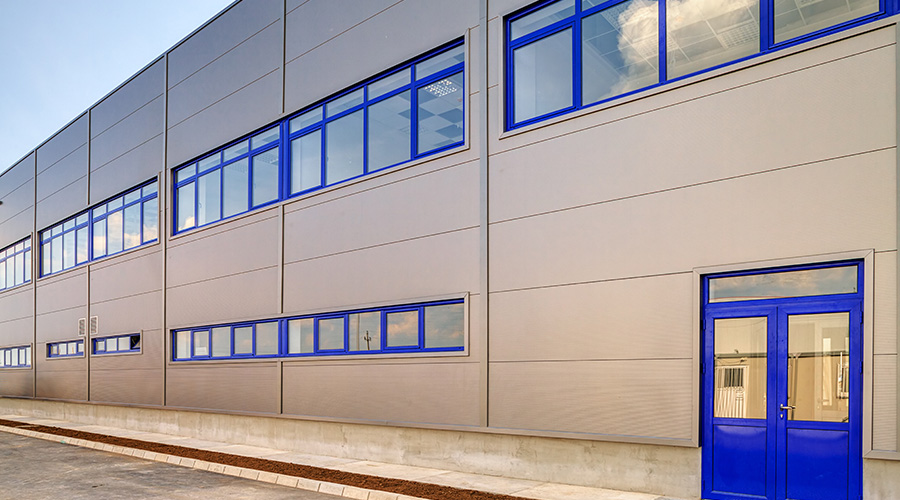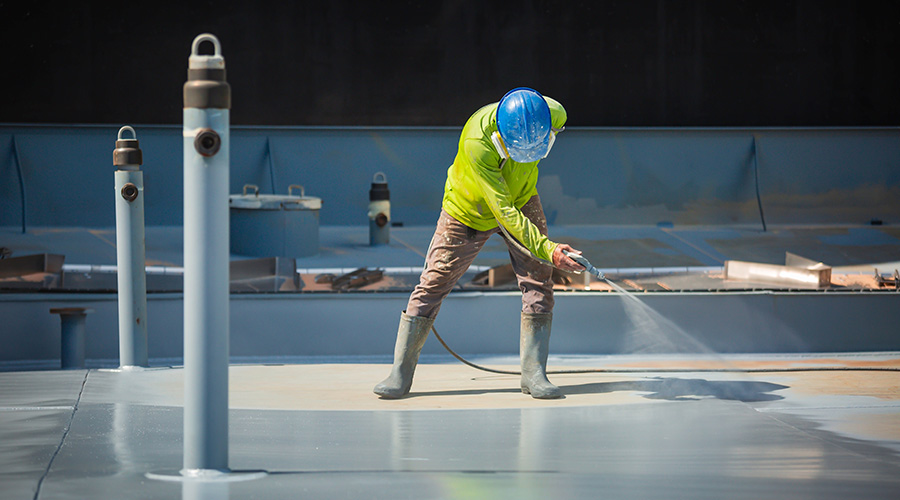Painting for Productivity
11 steps that can streamline painting projects and save time and money
The task of painting in commercial and institutional facilities is difficult, given the scheduling, materials and logistical factors involved with even a small-scale project. But the added challenge of trying to ensure that workers are productive might be enough to put any manager over the top.
Nonetheless, few managers can afford to overlook the potential benefits of streamlining and otherwise improving painting projects. A planned painting program can save maintenance departments time and money and can reduce maintenance and repair costs, while increasing the value and appearance of facilities.
And while the appearance issues addressed by painting might be more important in hospitals or commercial office buildings, they also can play a role in human relations by increasing employee pride in the workplace, even in facilities where there is little customer traffic.
A Productivity Plan
Maintenance managers seeking productivity improvements from their departments’ painting activities can consider the following 11 steps.
- Set a policy. Develop policy guidelines, addressing protection versus appearance, as the focus of a painting program.
- Survey. Conduct an inspection and inventory the painting needs of interior and exterior buildings and equipment. Do not forget safety painting, such as aisle markings, railings, fire-extinguisher locations, and sprinkler systems.
- Measure. Determine the units, square feet or linear feet for each surface that requires painting.
- Schedule. Establish a schedule of painting that is consistent with policy guidelines and environmental conditions, such as heat, cold, dampness, corrosion, etc.
- Plan. Develop an annual painting schedule that covers the entire workload in three to five years, depending on the severity of conditions and department policy. Distribute the load evenly throughout the year, i.e. inside during cold weather and outside during warm weather.
- Expand. Add special projects to the workload — such as work that is needed at more than five-year intervals, as well as work that is related to product development, testing of new painting materials, worker training and the like.
- Estimate. Using predetermined times available from consultants or estimates from experience, estimate the work time required for each painting job. Many managers find that predetermined times are more accurate, consistent and dependable for purposes of staffing and budgeting.
- Staff. Calculate the needed staffing, making sure to include job preparation, surface preparation, paint application and allowances for personal rest and minor, unavoidable delay time.
- Document. Document the above material in a painting standard practices (PSP) manual.
- Sell. Obtain top management approval. A PSP manual will help to sell the program if it includes an executive summary that demonstrates how the program will save money, reduce costs, and increase the safety, reliability and appearance of facilities.
- Train. Use the PSP to train supervisors and painters and to plan and schedule their work productively.
Preparation and Procedures
The best foundation for a high-quality, long-lasting paint job is surface preparation. Since both appearance and surface durability are affected, pretreatment must be thorough enough to provide good conditions for paint application.
All paints adhere best to clean, dry surfaces that are free of loose surface material or old paint. On wood surfaces, the best way to obtain these conditions is to sand the surface and wipe it down with a cloth that is damp with turpentine or paint thinner. Paint will still adhere better to a surface that is slightly rough than to a smooth, shiny surface.
The final step — wiping the surface down with a clean solvent-dampened rag — is essential. It removes the loose dust, dirt or chalky substance left on the surface when old paint oxidizes. And if the wood is damp, let it dry before painting. Paint or primer will not adhere very long to a damp surface.
Where dampness is concerned, metal surface preparation requires the same precautions as wood. Heavy or widespread rusting of carbon steel indicates that the area is probably too damp to retain a paint finish.
But there are remedies. First, find the source of the water and seal it off from the inside of the metal surface. When the surface dries, sand it. If it is too rough for sanding, use a chipping hammer and wire brush to remove scale and rust. Then wipe the surface with a rag dampened with solvent or paint thinner to get rid of remaining dust.
Facilities invariably have a range of interior and exterior surfaces and equipment that require varying painting procedures. Managers can consider using the following information as part of the PSP to ensure that painters consistently use the same procedures on surfaces:
- Painted metal, wood or plaster/plasterboard walls and ceilings in common areas generally require painting every three years. Clean, spackle and fill the holes, scratches and dents. Sand rough or gloss surfaces. Wash with tri-sodium phosphate (TSP) to remove the grease or dirt. Spot-prime bare spots, and finish with one coat of vinyl latex per standard specification.
- Painted doors, railings, equipment, work surfaces and floors generally require painting every two years. Scrape or wire brush the surface to remove chips and rust, and wash with TSP. Prime the bare spots with an epoxy primer, and cover with a finish coat of polyurethane.
- Painted concrete block in common areas generally requires painting every three years. Wash the surface with TSP and rinse. Allow to dry for 24 hours. Wire brush and chip off loose paint. Spot-prime with epoxy, and follow with a polyurethane finish coat.
- Painted equipment generally requires painting every four years. Commercial-blast the paint and rust down to white metal. Then prime and finish the surface with a high-performance epoxy.
Thomas Westerkamp is a contributing editor to Maintenance Solutions and the author of Maintenance Managers’ Standard Manual, from which this article is adapted with the author’s permission.
Related Topics:











